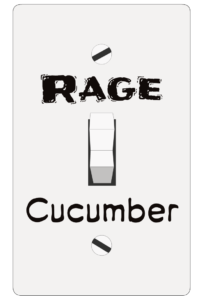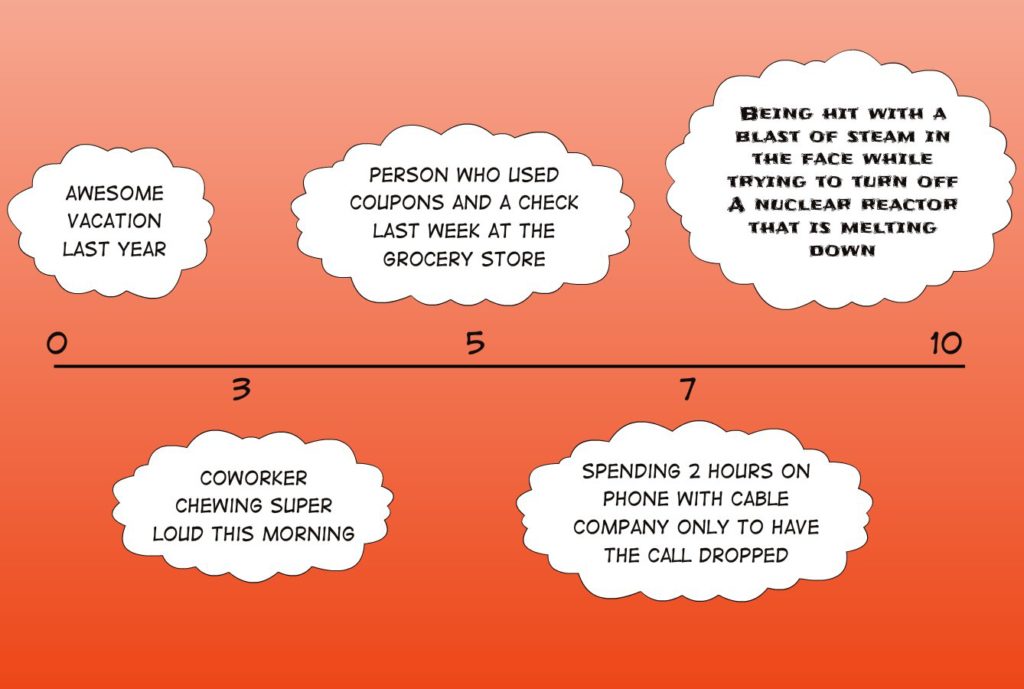
Anger is an emotion that can result in some pretty destructive and hurtful behavior that can result in all sorts of issues for the angry person and those around them. People with issues related to anger are often caught off guard by the emotion and say things like “I went from 0 to 100” or “I flipped a switch.” Anger can at times appear as though it is a light switch, however, as we will discuss, we very commonly overestimate how angry we are because we think of anger as “angry” or “not angry” instead of recognizing different levels of the emotion.
Imagine living in a world where we only know two colors, black and white. If we come across something that is different, say, a shade of gray, we will only be able to identify it as black or white because that is all we know. Without having more detailed descriptions of color, we would miss out on any subtle differences, differences which could be important. So now instead of an on/off switch we can start to see anger as something that goes from minor annoyance to hulk level rage.
So, what do we do, read a thesaurus? Nope! (though that does sound amazing). A common method is to create a 10-point scale of personal experiences related to anger. To do this, take out a blank sheet of paper and something to write with. Draw a straight horizontal line, at one end of the scale we have 0 (no anger) and the opposite end 10 (rage level infinity), then fill in a 5 (moderate anger) halfway in between, as well as a 3 (annoyance) and a 7 (Hoochie Mama!!!).
Now that we have our scale we can start filling it in, it is important that we use real life examples (memories) so the scale makes sense to us. Imagine a point in your life where you had no anger at all, that will be your zero. Next, fill in your 10, the point in your life where your head nearly exploded. Then fill in your 5, then 3, then 7. As you fill out the scale you might move things around, the most important thing is that the scale makes sense to you and how you experience anger. If you are motivated, you are welcome to fill in the scale completely, with personal events from 1 all the way to 10.

What’s the point? The scale shows us that anger is not an on/off switch, it’s more like a dimmer switch. Seeing the different degrees is helpful because it allows us to more accurately judge how angry we actually. When we are better able to tell how angry we realistically are we can better determine what we can do. Without being able to see the different levels, every time we get angry it seems like a 10 and we respond to the situation with 10 intensity, even though it may have only been a 5. And who is a fan of someone who rages out over not being able to find their keys?
This is just one exercise that can help us begin to better understand anger and it will most definitely take a few more to help us effectively manage it. In future posts we will take a look at understanding more about anger and additional tools which can be useful for helping reduce it. As always, if you or someone you know is experiencing significant struggles with anger, give us or a local counselor a call, we would be happy to help!
Nerd Alert: Black and white are regarded as colors to help demonstrate our idea, we understand in physics that they are not defined to as colors, so put your textbooks down and delete the 3 million word lecture you were about to drop on us.
Ronald Bristow is a Licensed Clinical Professional Counselor who has been in practice since 2010. He has worked in a variety of institutional environments with a diverse population of individuals. In addition to being a counselor and all around not so angry guy, Ronald is also a Brazilian Jiu-Jitsu black belt who began practice in the martial art in 2005. Ronald has avid interests in mental health topics such as anger management, depression, and anxiety as well as general science, and hobbies.
